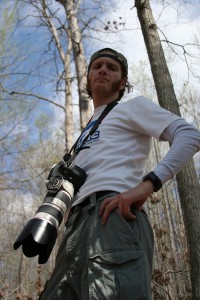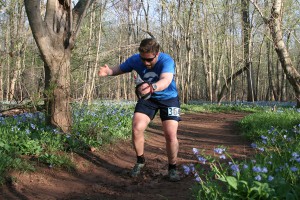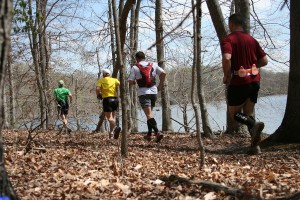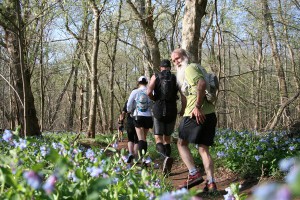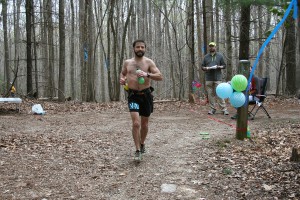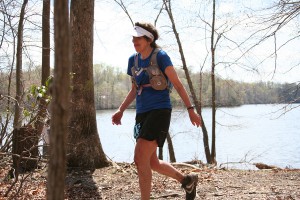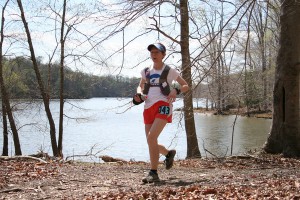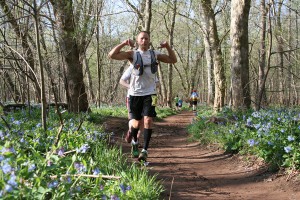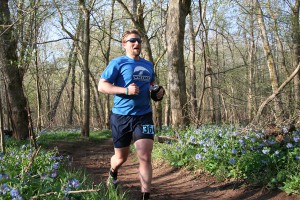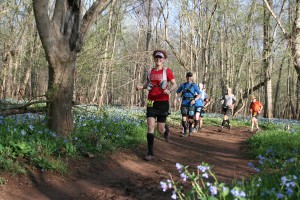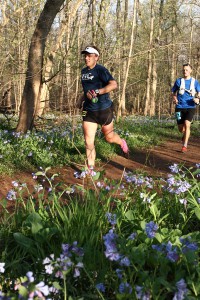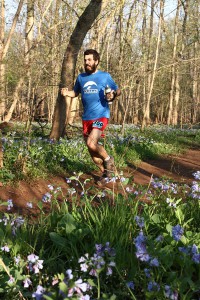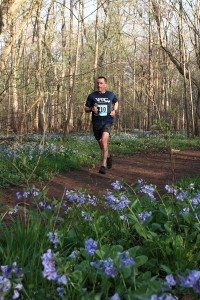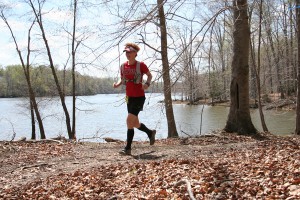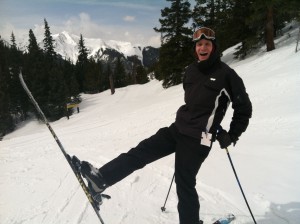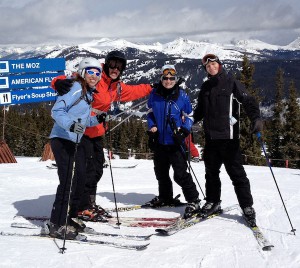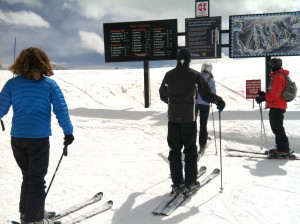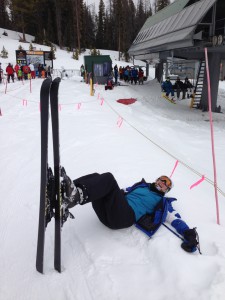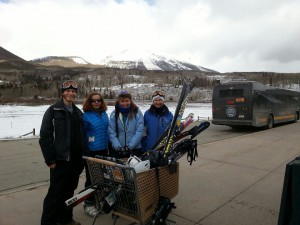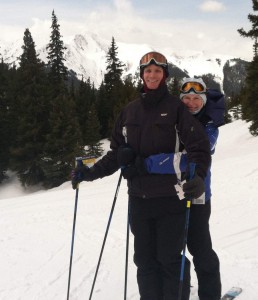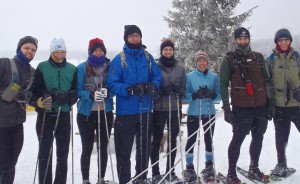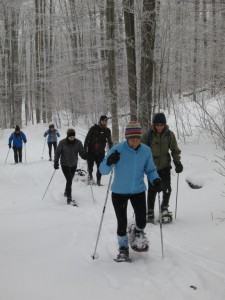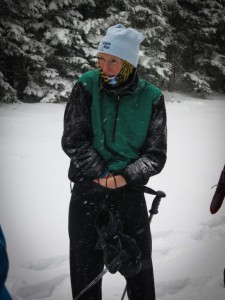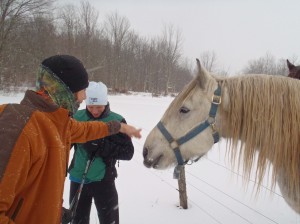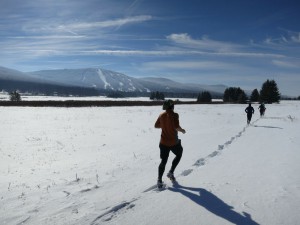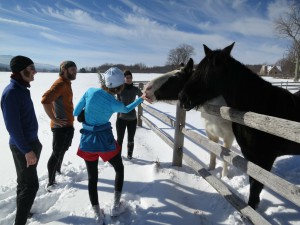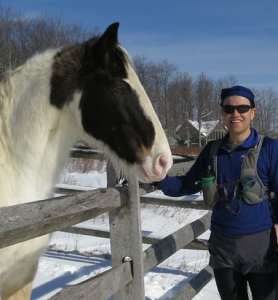[Inspired by conversations with Art, Joe, and the rest of the WUSsies at CPBG]
In the model of Eats Shoots and Leaves, we intentionally have left the title of Eat Shit & Run ambiguous in order to apply to a wider range of WUSsies: (a) the majority of whom simply eat, shit, and run, as well as (b) the singularly spectacular Sean Andrish, who actually eats shit and runs, very fast and very far. Undoubtedly, Sean also must shit, but Eat Shit Shit & Run seemed a bit wordy and lost our double entendre.
Entering his mid-forties amid a burgeoning pool of elite ultra competitors has not been gentle on our dear Sean’s ego. His tongue has not taken kindly to the taste of the dust kicked back at him by the young upstarts, who recently have been spilling over from road running into the ultra scene in droves. But, as I have explained to Sean on many a Wednesday night run, Legend Never Dies. He could slip way back to the middle of the pack, and everyone would still fawn on Sean the Great. Images stick, in the same way that parents continue to treat you as if you were still eight, even when you are CEO of a major conglomerate, have two children of your own, and are perfectly capable of finding the mustard in the fridge. (In the case of Sean, some moms do not believe their adult sons can purchase their own sticks of deodorant.)
Sean Andrish: Legend Never Dies could have been a perfectly apt title for this book. We hope no one interprets our selection of Eat Shit & Run as any kind of slap at Scott Jurek, or the virtues of quinoa that are extolled in his Eat and Run manifesto. None of us would disagree with the premise that all humans would surely benefit from healthier diets that include less processed food. But we aim to make a simple point: the belief that following Scott Jurek’s culinary advice will make you fast because it made Scott speedy is no less preposterous than advising runners to adopt fellow speedster Sean’s diet, which seems to consist of no actual nutrients. If vegan eating was as essential to human endurance running as Jurek has posited, one must conclude either that (a) Sean could become the world’s fastest ultra runner if only we could substitute quinoa cakes for his breakfast of Mt Dew and poptarts, or, intriguingly, (b) Sean is not in fact human.
Although tempting to imagine what kind of space alien kidneys might reside within Sean, our strong inclination is to go with Option 3: the Individualized Diet. Perhaps the likelihood of omega 3’s enhancing Sean’s performance may be no greater than Mt Dew’s new faux-healthful breakfast drink Kickstart giving Jurek’s mojo a boost. We are not suggesting that Sean’s aberrational athletic performance on a zero nutritional value diet debunks the large body of scientific evidence that suggests a diet of Mt Dew and hotpockets is not good for America. Rather, our argument is a bit subtler: athletes, as with humans in general, can thrive off of extremely variable diets, with Sean representing his own, rather unique, end of the spectrum. We doubt that the Sean diet is a good fit for more than 0.01% of the population. But we also doubt that an extreme vegan diet is the ideal fit for most runners, particularly female athletes.
Unfortunately, a health book with the message This diet MIGHT work for you is not nearly as compelling or marketable as a book that purports to improve the health of all, resulting in the proliferation of books that advocate a narrowly defined diet for a large number of people (ie, anyone willing to buy the book). Although good for profit margins, such an approach goes against the Genomic Age of science that we have been rapidly entering since the sequencing of the entire human DNA genome in 2000. Some day sequencing an individual’s entire DNA genome will be standard practice, and treatments and medications will be personalized to fit an individual genomic make-up. Humans vary considerably in physiology, and a major current problem in treating human disease is that conditions such as diabetes and cancer are highly heterogeneous, meaning that even patients with similar outward symptoms can respond very differently to various treatments and regimens. To oversimplify, the current approach to treating complex multifactorial symptoms such as type II diabetes can be likened to a mechanic who sees a ‘check engine’ light in your car. Rather than diagnosing the specific problem, he simply goes down a list of possible part failures (engine, transmission, tires…) trial by error until the car starts working again. Not a very time- or cost-efficient way of getting your car back on the road. In an age of individualized genomic medicine, doctors will be able to pinpoint the precise problem that is giving rise to high blood sugar, for example, and treat with targeted therapies, rather than blindly trying different meds until something works.
Although there have been some groundbreaking successes in individualized medicine, such as the treatment of children’s cancer, where the high cost of sequencing the entire human genome is surely justified, the costs are still too high for this practice to become standard. But we don’t have to know our precise genetic makeup in order to apply the principles of individualized medicine to more sensibly approach our diet. Just as a one-size-fits-all model of medical practice is rapidly becoming debunked, a one-size-fits-all model of diet is clearly an unuseful oversimplification.
Following fads is a natural part of being an American. (I was going to use a reference to lemmings, but I recently found out that the story of herds of cliff-diving lemmings is entirely myth. For reasons not entirely understood, lemming populations are prone to sharp fluctuations. During times of extremely high growth, large numbers will migrate to less-populated areas, a journey fraught with the perils of exposure to predators and dangerous river crossings. The sight of lemmings drowning in high numbers perhaps gave rise to the popular perception of mass suicide).
It is unlikely that anyone, even the charismatic Sean Andrish, is capable of breaking the deeply ingrained (pun intended) American food fad obsession, which would seemingly require some twisty double lightsaber that could subdue the media with one end and human evolution with the other. But if there is anyone who can be a poster boy for The Great Dietary Reality Check, it is Sean. Sean, who can win a 100-mile race with nearly 30,000 ft of elevation change, having subsisted on a diet of Mt Dew, poptarts, hotpockets, McDonald’s, and epilepsy medications. (Yes, these feats are all the more impressive given that Sean has a variant of epilepsy that is extremely poorly controlled, despite brain surgeries and chip implants, and a continually carouseling regimen of pill that sometimes make it impossible for him to lift his feet. Every time I hear on the radio that someone was hit by a metro train I have to wonder if Sean had another seizure by the tracks again.)
Readers will likely come away from this book split into two camps. One group will feel vindicated, thinking You know, I always thought those diet books were a loada crap as they bite into their bacon cheeseburger. On the other hand, those looking for dietary rules and guidelines, like that adorable USDA pyramid with the cartoon drumsticks and bread loaves, will probably feel left hanging. For the folks in the former group, we knew you weren’t going to change your diets anyway, so we hope you at least find this book entertaining. For those in the latter group, we can’t provide a panacea, but we hope this book still provides some insights into the range of diets that can still be healthful for running, the potential risks of following extreme dietary fads that are beneficial to only a small percentage of people, and a general framework for how to go about determining whether a diet is a particularly good fit for you or not (which basically boils down to: When I eat that do I feel like crap?. Health books can be useful for providing ideas and personal success stories to consider and possibly experiment with, especially for those trying to overcome fatigue or stomach ailments. But at the end of the day you have to find what works for you. When I started dating a vegetarian, my meat intake naturally plummeted. But so did my energy during runs. It turns out my boyfriend can win races munching his veggies, but some girls clearly need their t-bones. We’re not at the point where genomic testing can reveal why my boyfriend and I have such distinct physiological differences, but frankly it doesn’t matter. Eat what works for you, and let others eat what works for them. And whatever happens, keep running.
